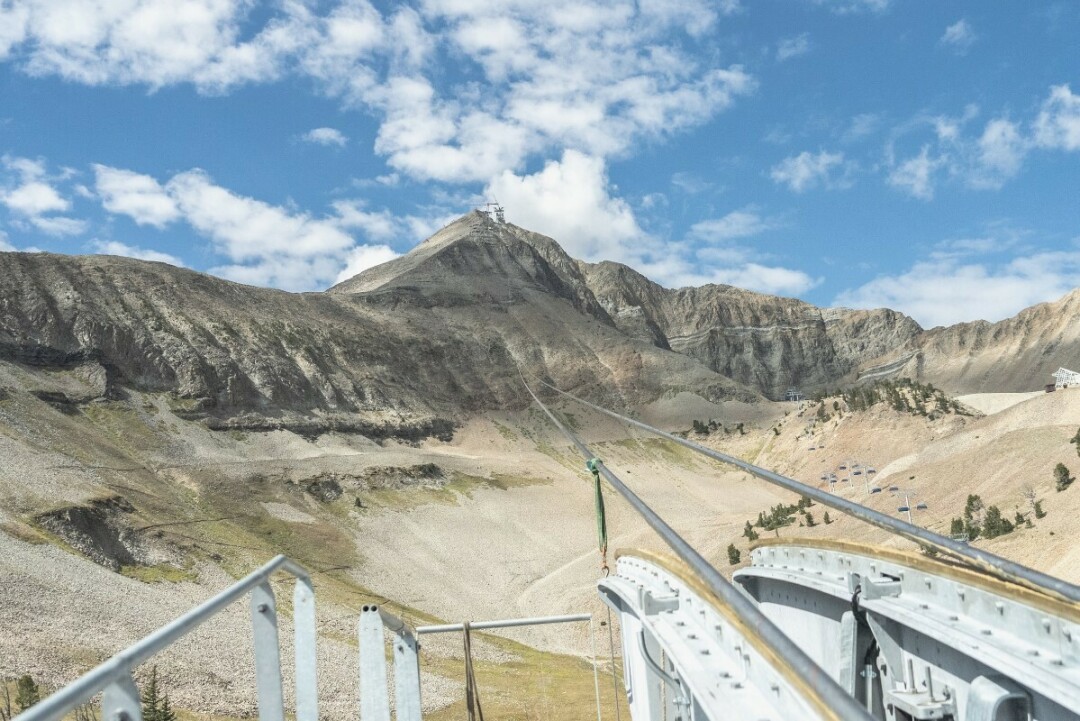
BOZEMAN — For a fifth straight year, Montana State University recorded an all-time high for research expenditures — the funding put toward scientific discovery and other scholastic and creative pursuits. MSU is the largest research enterprise in the state, and its total expenditures exceed the research expenditures of all other institutions in the state combined.
MSU’s annual report to the National Science Foundation showed that its research activities accounted for roughly $230 million in expenditures during the fiscal year that ended in June. That figure is a 14% increase over the prior year, which was the first time in Montana history that research expenditures at an institution of higher education ever topped $200 million.
"Montana State's steadily growing research enterprise serves the people of Montana in a variety of ways," said Alison Harmon, MSU’s vice president for research and economic development. "Research is an engine for economic growth, and many of MSU’s projects are developing innovations that can be commercialized and stimulate small business growth across the state."
The vast majority of dollars spent on MSU research come from federal grants and are won through competitive applications, Harmon noted. Roughly 90%, or about $207 million, came from federal sources including the Department of Defense, NSF, NASA and the Department of Health and Human Services. Most of the remaining 10% is from private foundations and donors, with 2% coming from the state of Montana.
The university’s record expenditures in 2022-2023 directly supported 858 undergraduates, up from 755 last year, providing funding through programs like MSU’s Undergraduate Scholars Program for students to work on research projects. The funds also supported 612 graduate students and 53 postdoctoral researchers.
"MSU prides itself on providing undergraduates with research opportunities, and this data shows we're expanding those opportunities and really getting students involved in hands-on, purpose-driven work that contributes to them completing their degrees and graduating," Harmon said. "These are our future researchers and business leaders."
A total of 238 faculty and professional staff served as principal investigators on grant projects, and 639 faculty received support from research dollars. During the fiscal year MSU researchers were awarded 524 new grants or contracts totaling $166 million — funding that will support research as it is spent over coming years.
“Competition for research dollars is fierce, and the success our faculty and research staff show in securing funds is indicative of the quality of their scientific and creative pursuits,” said Bob Mokwa, MSU’s executive vice president of academic affairs and provost. “This is research that will have a tangible impact, both on the Montana communities we serve and on the lives and educations of the students we teach.”
Exceeding $200 million in research expenditures by 2024 is a goal set forth in MSU’s strategic plan, “Choosing Promise,” and is part of the university’s larger goal of achieving the highest standards of research and creative outcomes. MSU first met that goal last year — two years ahead of schedule.
Among MSU’s academic colleges, the College of Agriculture recorded the largest figure at $50 million, followed by the College of Letters and Science at $29 million. MSU's Norm Asbjornson College of Engineering had $23 million in expenditures, while the Mark and Robyn Jones College of Nursing had a total of $14 million and the College of Education, Health and Human Development had $6 million. MilTech at MSU recorded the largest figure of any university program, at $35 million.
MSU is one of only 146 institutions in the U.S. to receive an R1 designation for its very high research activity by the Carnegie Classification of Institutions of Higher Education, and among those, MSU and Utah State University are the only two that also have an enrollment profile of “very high undergraduate.”
Highlights from the past year include:
- Backed by a $20 million NSF grant, MSU is leading a new project to understand the behavior and social impact of prescribed fires by developing new technologies for real-time monitoring and advancing collaborative relationships between researchers and educators across the state.
- Building on nearly five years of helping the Department of Defense and the Department of Homeland Security improve methods for resisting cyberattacks, MSU researchers are leading a new effort to reduce software vulnerabilities across a wide range of systems under a $4.47 million, three-year DHS contract award.
- NSF’s Regional Innovation Engines program is driving a pair of $1 million MSU projects to leverage MSU research to grow regional economic opportunities — one involving the use of photonics technology for precision agriculture, the other for quantum technology that’s set to play a critical role in 21st century communications, computing and other fields
- Angela Des Jardins in MSU’s College of Letters and Science is leading a project, funded with $6.5 million from NSF, that will give several hundred undergraduate students from around the country a unique experience conducting scientific experiments and livestreaming video to NASA during the 2024 total solar eclipse.
- Two researchers in MSU’s College of Letters and Science received prestigious NSF CAREER awards totaling $1.25 million. Blair Davey in the Department of Mathematical Sciences is advancing a mathematical tool that can be used to model natural phenomena like electromagnetism, astronomy and fluid dynamics, while Amy Reines in the Department of Physics is researching the relationships between massive black holes and the properties of the small galaxies that host them.
- Stephanie Wettstein in the Department of Chemical and Biological Engineering is working on a $450,000 NSF-funded project to develop improved methods of making a bio-based plastic from agricultural biomass that would otherwise sit in farmers’ fields.
- MSU’s Jake Jabs College of Business and Entrepreneurship earned another five years of accreditation from the Association to Advance Collegiate Schools of Business, the world’s oldest and most renowned business school accreditation organization.
- Eric Sproles in the Department of Earth Sciences was awarded $750,000 from NASA to fine-tune measurements of sunlight reflecting off snow in order to help calibrate instruments on the satellites that are used to manage water resources.





News Comments
Thank you
Open Auditions for Annie
Monday, Sep. 16, 2024
I’m at the Bozeman airport where your painting, “Blowing East” is displayed. It’s absolutely gorgeous! Bravo, Marci!!
The Artists’ Gallery in Bozeman’s Emerson Cultural Center May Exhibits
Sunday, Jun. 30, 2024
This is so typical of a sign in, which we should not have to do to check if we or some one in our party got a permit. I have been working or "creating an account" for 30 minutes and just get the same ...
Smith River permit drawing results available
Sunday, Mar. 10, 2024
I have struggled with this podcast and my own participation therein, the event itself obviously traumatic, but beyond that my inability to reach anyone and convey anything resembling truth. The person ...
Billings, MT Case Becomes True Crime Podcast | 'An Absurd Result'
Marktokarski
Saturday, Jan. 20, 2024